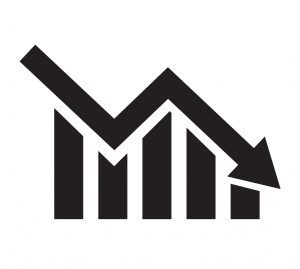
We live in a fast-paced world. Everything is go, go, go and now, now, now.
The modern American consumer does not want to wait for anything. That’s because they seldom have to, given the instant nature of modern society.
Gone are the days when it would take in excess of two to three minutes to log onto the internet. Now, in the era of 4G and wi-fi speeds processing hundreds of megabytes per second, the assumption is that if we want something, it’s only a button press away.
There’s nothing wrong with that. Technology has rocketed us to this point. But, for the modern business owner, there is a certain rising expectation that must be met, lest you be left out in the cold by your audience.
Users, particularly those browsing on mobile devices, want to see photos, videos, and websites load in the blink of an eye. If you can meet that demand, then great! But, if you can’t, you’re likely losing a lot of potential business as users click away from your site in droves while staring at a blank screen.
If you’re scoffing at your computer right now, you shouldn’t be. Mobile speed drop-off is a very real issue plaguing a great many businesses.
The old adage is “slow and steady wins the race,” but in 2018 fast and faster is the only way to even compete, let alone win.
How Many Users Are Your Losing?
If you’ve noticed that your website hits are down month to month, try to log onto your site from a mobile device. How long does it take?
If it’s anything more than two or three seconds, you’re losing a ton of traffic.
It has been estimated that many businesses see a 50% drop off in site traffic due to speed related issues. Imagine what you could to with double the number of eyes on your site every single day. It can happen, but you have to keep up with the times.
Google reports that up to 53% of users click away from a site if it takes more than three seconds to load. That’s an insane number of people. What’s more, for every additional second another 20% drop off. By the time you’re over five seconds, you’ve got next to no one looking at your content.
That’s why it’s so vital to look long and hard at your website before taking the steps needed to speed it along. One to two seconds of lag time could spell the difference between success and failure.
Declining Businesses

If you don’t believe us, there is proof out there to back up these claims.
Just last year, a number of major newspaper and media websites were losing traffic by the boatload because of extremely long load times.
Studies showed that these sites took anywhere between 10.5 and 22 seconds to load a page. When is the last time you waited 20 plus seconds for a website to load without either switching away or going downstairs to check to see if the lights on your wireless router were still solid?
DeviceAtlas reported that wsj.com, one of the slower sites, was costing mobile users $0.39 per visit, based on the average mobile data prices in the United States.
A few other facts in this report state that the average page weight of these sites on a mobile platform was 1.35 MB, and 30% of users were accessing the page through some form of mobile URL redirection.
Samsung was one of the companies that lost big, seeing up to 5% of its web traffic share vanish between the fourth quarter of 2016 and the first quarter of 2017.
What Decreases Website Speed?
Let’s say that you have an issue with speed, but you’re not sure what’s causing it. There are a number of problematic issues that one could point to in such an occurrence.
The size of your images might have something to do with it. If you fail to properly define the size or quality of your pictures, the site can become encumbered by massive files which weigh down internet speeds. This is one of the most common causes of speed loss.
If you’re skimping out on hosting services, that could be another reason for decaying speed. Shared hosting becomes a burden once a site reaches a certain level of popularity. Remember, with success comes the need for a dedicated hosting server.
If you’re using a lot of Flash related features, you might see some performance drop off. Remember, a little bit of Flash can be a great thing, but too much could be an albatross around the neck of your website.
Sometimes it’s just poor mobile optimization. Mobile internet use is skyrocketing and will overtake traditional desktop browsing soon. That’s why it’s so important to have your site fully optimized for both platforms. Speed is an important part of the overall user experience, which should be on your mind throughout every step of the web design process.
Improve Your Slow Load Time
Pay careful attention to your site’s numbers. If you’re starting to drop, then perhaps a redesign or reorganization is in order. The team at 9Sail is ready to assist. We specialize in creating quality website content and designs that are fully optimized for both desktop and mobile.
Invest in a website that’s fast enough to keep up with your dreams. Call 9Sail today at (201) 632-1185, or visit us online.
Helpful resources
Discover the power of effective digital marketing.
Sign up to receive 9Sail’s exclusive content and tactical tips, focused on helping law firms grow.
9Sail takes your privacy seriously and will only use your personal information to deliver communications you have requested of us. You can change your preferences at any time.

